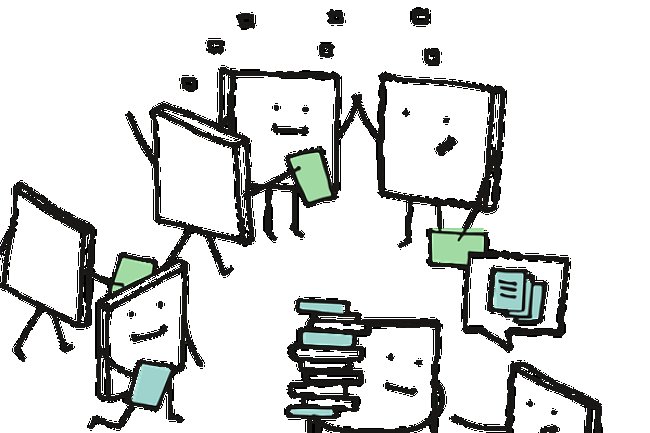Understanding Concepts
Everything Tutors Need To Know About Social Learning Theory
- Mar 14, 2022
- 0
- 3006

You are the sum total of the five people you hang out with the most. We’ve all heard this saying, right? But, very few of us put stock in it.
Surprisingly, there’s a lot of truth in it. In fact, it has been scientifically proven that we often develop cognitive and behavioural traits by observing the people around us.
This truth forms the foundation of the social learning theory (SLT); which essentially posits that students learn better in groups and by observation. The theory was first introduced by Albert Bandura in the 1960s. According to him, people learn through observation, imitation, and modeling. This means that students can learn new behavior by watching other people perform it.
To see SLT in action, let’s take the famous Bobo Doll experiment. Here, children were shown videos of adults striking a Bobo doll (clown punching bag). It was found that these children were much more likely to imitate the action of hitting the Bobo doll than other children who hadn’t seen the videos. In essence, the observations from the videos encouraged the first group of students to repeat the same behaviour exhibited by adults, thus proving the social learning theory.
SLT provides tutors with a great opportunity to help students learn quicker and better, if leveraged the right way. Interested to learn more? We’ve explained it all in this article.
As a tutor, you can use the social learning theory to directly address behavioural concerns in certain children and contribute to their overall personality development. In order to understand how, you will first need to look into the four guiding fundamentals of the social learning theory. They include -
1. Attention
You need your pupils to be focused and attentive, so that they can observe and understand what you are trying to convey. If you’re demonstrating a particular behaviour that you want them to learn, make sure it’s an eye-catching one! Because students won’t be able to reproduce a behaviour if they don’t even pay any attention to it.
2. Retention
Retention is the ability to register information for later use. In simple terms, it’s the act of remembering the demonstrated behaviour. For example, in the Bobo Doll experiment, the behaviour displayed caught the attention of the children and registered in their minds.
3. Reproduction
You’ve probably heard of the phrase “we do what we see”. That’s what reproduction means here. Reproduction occurs when learners imitate the displayed behaviour. This can happen on purpose or instinctively.
4. Motivation
You can motivate students to reproduce a particular behaviour by rewarding them. On the other hand, you can also punish them for reproducing bad behaviour. These rewards and punishments act as extrinsic factors that impact the likelihood of a student to reproduce the modeled behaviour.

How Can You Incorporate Social Learning in Your Teaching Approach?
Now that you have a better idea about social learning theory, you’re probably wondering how to implement it in your online classroom. Well, the answer is simple. All you need to do is add a few social elements to your sessions -
- For instance, role plays are a great way to promote social learning. Ask students to act as their idols, or just people they look upto.
- In order to help students retain their observations, you can replace a few of your online lectures with group discussions. Zoom has a ‘breakout room’ feature where students can be divided into different groups. You can ask your students to watch a video about a particular topic and then explain it to their team members. This will help them remember what they observed in the video. To make sure that all the important points are covered, distribute some reference material to them as well. You can also create a video playlist of inspiring TED talks or speeches. Ask students to contribute too, and play these videos during class.
- Gamification is another technique you can use to implement social learning in your classroom. This refers to the addition of gaming elements. For instance, you can create leaderboards and reward points to students who perform well in class. The best part is that this adds a fun factor to your class, thus improving both attention and retention.
Everyone wants to be accepted by society, so we reflexively observe how people act in situations and adapt our behaviour accordingly. Students can benefit greatly from this, and as tutors, it’s our duty to provide them with the best and most effective learning methods.
Add Comment
Related Blogs

Understanding Concepts
3 Tips For Teachers To Use Backward Design In Lesson Planning
- Nikita Ann...
- Jan 5, 2022
- 0
- 2964

Understanding Concepts
Understanding Communicative Language Teaching (CLT)
- James Coop...
- Feb 2, 2022
- 0
- 2708

Understanding Concepts
Teacher's Guide To Implement Concept-Based Learning In 4 Steps
- James Coop...
- Mar 28, 2022
- 0
- 3747
Popular Blogs

Tips for Educators
3 Tips To Apply Classical Conditioning In Classrooms
- Natasha Di...
- Apr 25, 2022
- 0
- 21475

Understanding Concepts
4 Reasons Why Skill-Based Learning Is Important For Students
- James Coop...
- Mar 14, 2022
- 0
- 10976

For Parents
Everything You Need To Know About STEAM Education As A Parent
- James Coop...
- Mar 1, 2022
- 0
- 10755










